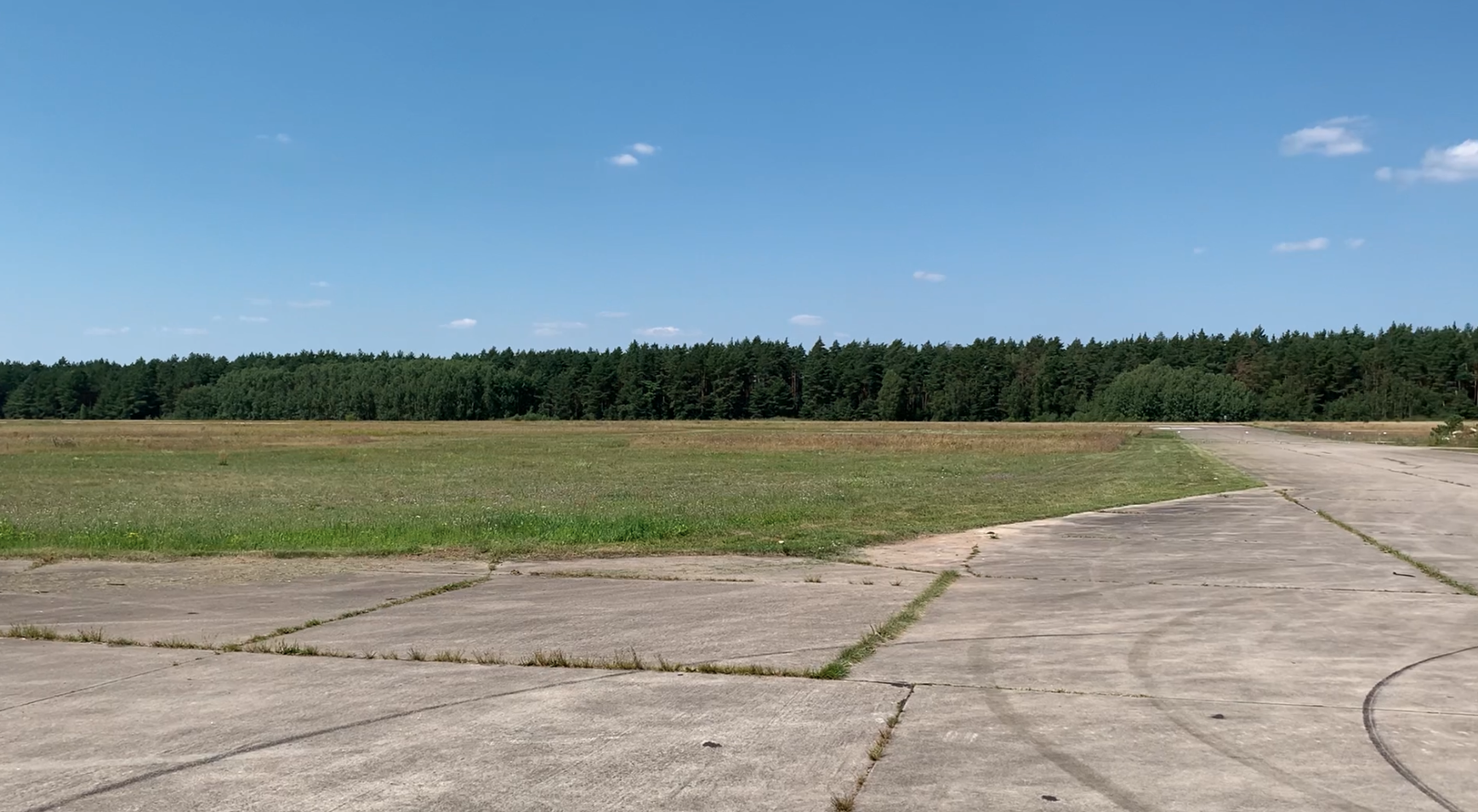Piła 2012-05-28
Geographical coordinates: 53.169N 16.710E. Elevation 80.00 m (262 ft).
History of Piła Airport.
Second Piła Airport.
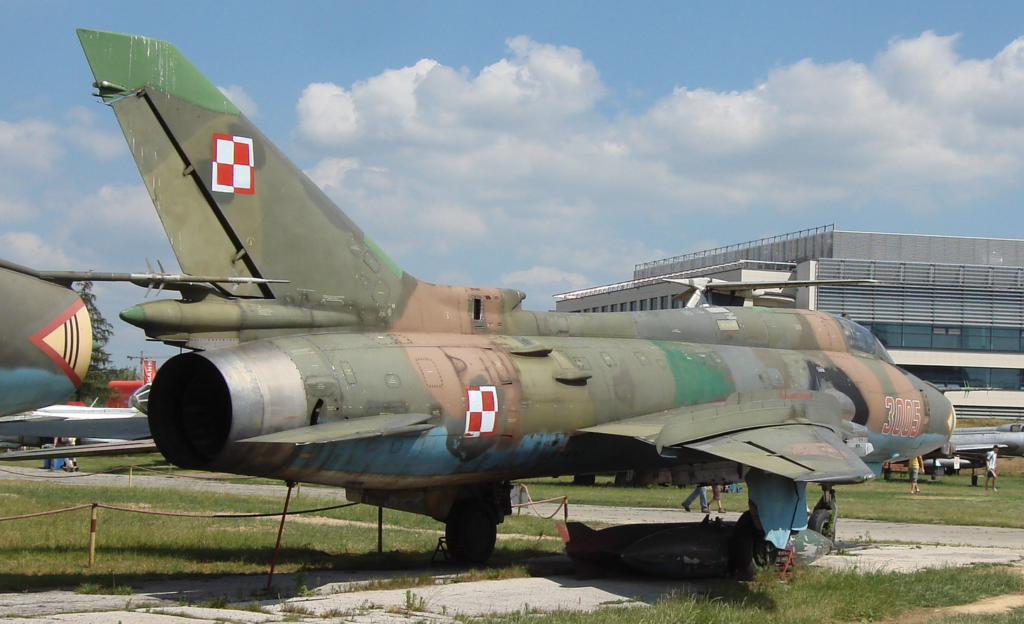
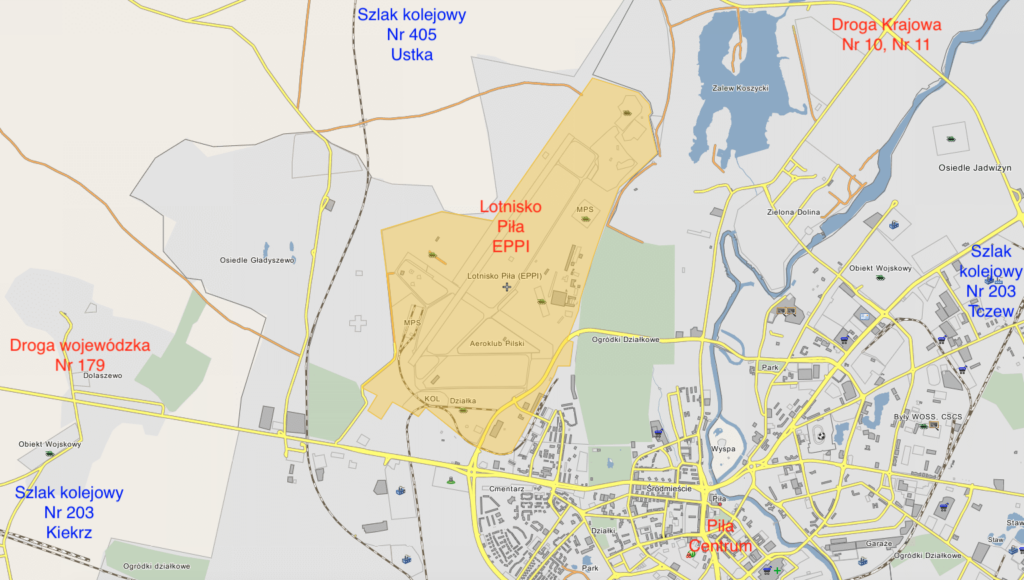
Due to the start of aircraft production at the Ostdeutsche Albatros Werke GmbH plant and the opening of a pilot school, it was necessary to open a new Airport. Its flying field was located to the west of today’s Lotnicza Street. It was put into operation in May 1914. Initially, the flying field was in the shape of a quadrangle measuring 1,000 m x 1,000 m.
On the eve of the outbreak of the World War, the entire aviation staff of the local garrison numbered around two thousand airmen. These included pilots, mechanics, ground crew and cadets of the pilot school. The aforementioned flying school was also attended by Poles, who were discriminated against and severely selected because of their origin. They were not allowed to hold command positions. However, as very good professionals they were valued by the Germanic people.
During the World War, the Germanic planes stationed at the Airfield primarily conducted reconnaissance and combat flights against the Moscow army and, towards the end of the war, against the Greater Poland insurgents from the surrounding areas.
After 1918, the Airfield was left without a host. The airfield occasionally served the purposes of liaison and postal aviation. One of the postal planes had to make an emergency launch in 1927, on the River Gwda, near nearby Košice.
During his election campaign, the devil Hitler, who was democratically elected dictator of the Third Reich less than a year later, personally landed at Piła Airport. After Hitler’s rise to power, an unauthorised militarisation began, which was limited by the provisions of the Treaty of Versailles. The Germans were assisted in this militarisation by the Muscovites. Among other things, by making their training grounds or strategic mineral resources available. In Piła, aircraft repair facilities were opened in the former facilities of the Albatros factory and pilot school.
The turning point for the airfield came in 1939, when the expansion of the fortifications and the large garrison, which by the end of the war had become a fortress – festung schneidemühl – began. On the site of the current airport infrastructure, construction of the aircraft hangars and all the facilities for the future air base began. Construction of a system of shelters for the population also began. According to other information, this work did not begin until 1943, after the first bombing of Krzesiny airfield near Poznań and the facilities there.
During the Second World War, mainly twin-engine fighter aircraft were overhauled here. Thanks to a pre-constructed passageway, sidings, ramps and a connection to the railway network, aircraft that needed to be transported on railway platforms could reach the repair facilities. At times of peak aircraft losses, up to two to three aircraft a week were repaired at Pila, which were then flown and sent back to the front. Eyewitness testimony suggests that towards the end of the war Germanic jet aircraft may have appeared at the Airport, for which parts were allegedly manufactured in an underground factory.
At the beginning of 1945, due to fears of the war front approaching the City, the aviation facilities were partially evacuated and the equipment was transported by rail deep into the rajah. A few overhauled and inoperable machines remained on the apron, which had not managed to be taken from the Red Army’s besieged fortress. However, a lot of machines and equipment remained. They became the spoils of war of the Muscovites.
New RWYs at the airport.
In 1943, the construction of three RWYs, with a concrete surface, of 1,525 (1,500) m in the 13/31 direction, 1,200 m in the 03/21 direction and 1,125 (1,250) m in the 09/27 direction, was undertaken. They were positioned further west of the active airfield. They were built on a triangular plan, in line with the trends of the time. By the end of the Second World War, one of the runways had not been completed. The taxiways were also not completed. Despite this, the airfield at Piła and a similar one at Mierzęcice, were airfields intended for testing new jet-powered aircraft. These plans could not be realised due to the rapid advance of the eastern front.
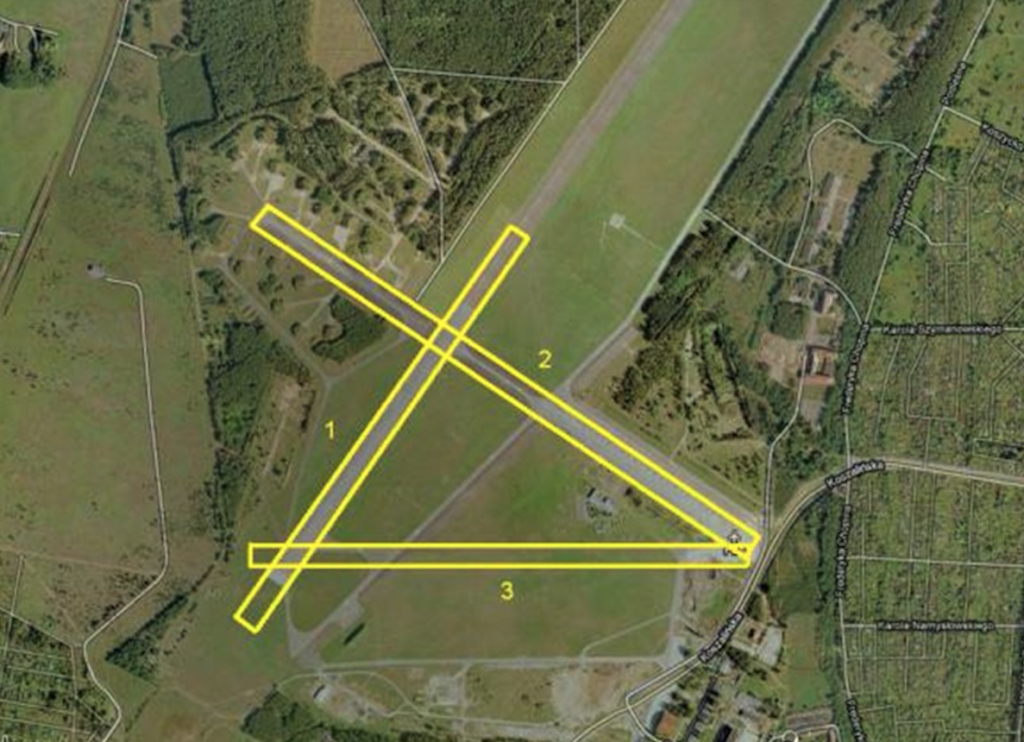
The next expansion of the RWY took place between 1953 and 1955 and was related to the introduction of turbojet-powered combat aircraft. At that time, only two RWYs were refurbished. The main RWY was given a length of 1,900m and a width of 40m. The second one was also widened, but its length remained unchanged. Concrete DKs and stands were also built. During the communist era, both RWYs were systematically repaired. Every 5 years or so. RWY No. 2, was used less frequently, due to the eastern approach running over the city centre itself. Another extension took place in the early 80s.
Compensation plate at Piła Airport.
Compass plates are used to compensate compasses and calibrate navigation systems. The point is that the magnetic compass (aeronautical compass) is an extremely important, highly sensitive instrument and must be as precise as possible. Therefore, from time to time, this instrument needs to be calibrated, i.e. adjusted to a standard. Compensating for the deviation of a magnetic compass involves counteracting the forces of aircraft magnetism at the compass site by placing magnets, electromagnets or even iron plates generating magnetic fields of opposite effect near the compass. This is done without removing the device from the aircraft. The plate of this stand is marked accordingly and the stand itself must be away from other objects that could affect the calibration. Compass compass compensation is also performed on ships and vessels.
At Pila Airport, the compensation plate is better known as the ‘Compensation Circle’. This is due to its being the most advanced design of its type. The plate on which the aircraft was placed was rotatable. An aircraft with a total weight of up to 30,000 kg could be placed on it. In addition, there was an element supporting the tail of the aircraft, so that the aircraft assumed the exact position (angle of attack) that the aircraft has during horizontal flight. In the period 2011-2013, this object, or rather what was left of it, was examined by Polish specialists and aviation enthusiasts.
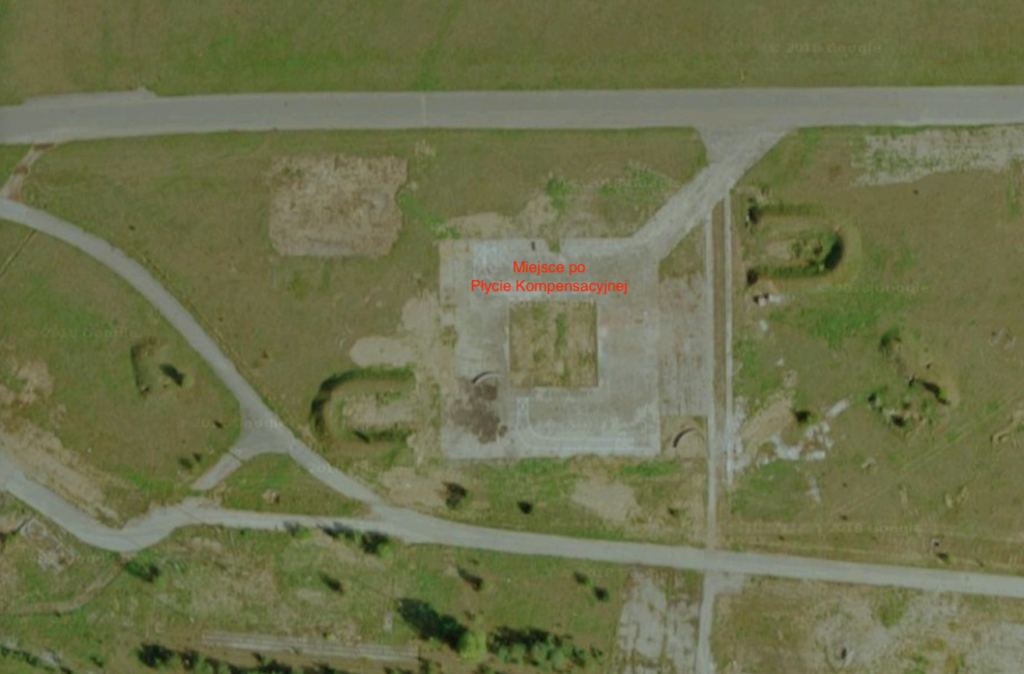
Photo description: There were also underground fuel tanks nearby and Germanic aircraft were refuelled here.
The composition of propellants and lubricants (MPS).
An underground fuel depot with a capacity of 100,000 litres. Even for the time, it was medium-sized. Its commissioning dates back to 1939. Construction of a new fuel depot began while the Second World War was still in progress. Even after the war, the depot was renovated and extended several times. In the 1980s, another MPS base was built.
Hangars.
The metal, arched hangar known as the ‘Tin Man’ was commissioned in 1943. It was intended as a makeshift hangar. It happily survived for many decades. It is currently used by the Aeroclub of the Pilska Land.
One of the double hangars was put into service in 1944. In February 1945, the southern part of the hangar was destroyed. From 1953, it housed the 48th Field Aircraft Workshop. Today, it houses the headquarters of the Goliat Janusz Polaszek Sp. z o.o. company, which manufactures Christmas decorations.
In 1944, the Germanic Germans proceeded to build another hangar, which was not completed. The mighty reinforced concrete pillars are a reminder of it.
Piła airport in Poland.
In February 1945, Piła Airport was occupied by Soviet troops. No documentation relating to the Soviet presence at the Airport has survived. The Muscovites never kept strict records. The Soviets operated at Bagicz from 1945 until 1992 and nothing has survived. All that is known is that nothing was done at the Pila Airfield and, on the contrary, the airfield was devastated. It was probably an airbase of the last category, close to the rank of an airstrip. Soviet troops were stationed at Piła Airport until 1952.
The Second World War officially ended on 8 May 1945 and, according to the Muscovites, on 9 May 1945. The great ones of this world decided that Pomerania ended up within the borders of Poland. And so Piła too. But it took another five years before the Muscovites returned strategic facilities; airfields, barracks, military sites.
Supposedly in 1950, the Airport was officially handed over to the Polish Command. The Poles took the rebuilding of the Airfield, destroyed by the war and devastated by the Muscovites, very seriously. Necessary renovations were carried out to accommodate the 16th Air Assault Squadron here.
At the beginning of 1952, the 6th Assault Aviation Regiment was transferred to Piła Airport from Strachowice. On its basis another regiment, the 51st Assault Aviation Regiment, was formed. Initially, the 51st Assault Aviation Regiment started to be formed at Gdańsk-Wrzeszcz Airport, but the formation was not completed. Both regiments, and additionally the 53rd Assault Aviation Regiment (Mirosławiec) belonged to the 16th Assault Aviation Division (Piła).
The first propeller-driven Il-10 aircraft landed at the airport in 1952. The complete rearmament of the regiments stationed at Piła to turbojet-powered aircraft did not take place until 1957. With the new aircraft, the Regiment gained combat capability in a very short time. This was also influenced by the construction of a new, wider and longer RWY and the necessary logistical and technical infrastructure to support turbojet-powered subsonic aircraft.
On December 2, 1960, the first Lim-5 M attack aircraft arrived at Piła. These were probably 2 machines and were to be operated on a trial basis. By May 1961, there were already 11 Lim-5 M aircraft in Piła. There is a problem with the number of aircraft received, as the 60 aircraft built were operated at three airfields: Piła, Bydgoszcz and Goleniów.
But in the very first days of use in the units, many design flaws of the Lim-5 M were discovered and several accidents and disasters occurred. The right decision was therefore taken to withdraw them from combat units and subject them to modifications. The modernised assault aircraft, designated Lim-6 bis, stayed at Piła for many years. In total, around 60-70 Lim-6 bis / 6 M aircraft were delivered to the two Regiments at Piła Airfield. The new equipment allowed new tactical elements to be introduced into training. Among others, the regiments were re-deployed with landings on airfields with ground surfaces.
In the 60s, as a result of the Vietnam War experience, aircraft centring and parking in hides began to be used. The stands were bunded on three sides with earth, which in theory and practice made it more difficult to destroy aircraft on the ground. These bunds can still be found at the Airport today (2012).
16 Flight Command Squadron.
In the late 1950s/60s, in addition to the 6th Fighter Aviation Regiment, the 16th Air Command Squadron, or JW 1084, was stationed at the airfield. In 1962, the commander was Major Pilot Kurczalski. The chief of staff was Capt Kowalski. The Political Affairs Officer was Capt Jadczuk and then Capt Stagraczyński.
The 16th Flight Command Squadron consisted of four subdivisions. Radiotechnical Company: radars, radio stations, distant and closer radio beacons. The company commander acted as Flight Commander. Communications Company: liaisons, telephones, radio beacons. Flight Insurance (UL) Company: ground searchlights, generators. Flight Command Team (ZDL): meteo, planners, launchers. The meteo had synopticians, observers and advisories. The advisers received weather forecasts broadcast from Warsaw and other aviation regiments and passed them on to the synopticians. These developed the meteo maps. The observers collected data from the meteo garden and compiled weather charts and passed them on to the synoptics. The starters observed planes approaching for landing through telescopes and binoculars and prepared paraffin lamps for night flights and set them up on the outskirts of the DS (RWY), as electric lamps were scarce.
The barracks of the 16th Air Command Squadron were located between the Canteen-Kitchen and the Infirmary parallel to Air Street. They were barracks built back in the Second World War. The headquarters were located on the ground floor of the Flight Control Tower of the Duty Flight Manager (DKL).
The 16th Air Command Squadron was in the service of the 6th PLMSZ and the 51st PLMSZ. Pila was, of course, the home of the 16th Air Assault Squadron Command (1951-1967). Its commander was Colonel Pilot Jerzy Bazhanov (1959 -1963), who spoke good Polish. The deputy commander was Colonel Serwinski, who spoke very little Polish. His catchphrase when visiting the detention centre was – “Bandits in Polish uniforms.”
Sukhoi Su-22 aircraft. 1984.
The last and at the same time the largest modernisation at Piła Airport took place in 80 years. On 13 November 1984, the first modern assault-bomber aircraft of the Su-22 M 4 and Su-22 UM 3 K types were transferred to Piła. In connection with the acceptance of the new aircraft, the airport was again extensively rebuilt. The main DS (RWY) was lengthened and widened, which eventually had a length of 2,600 metres.
The CPPS was built on part of RWY No. 2 and it was no longer used for take-offs and landings. However, it should be remembered that each Polish First Air Regiment had developed plans to launch combat aircraft using taxiways and ground surfaces. Cluster or trio take-offs of aircraft from opposite sides of the RWY with little time difference were practised. All this was done in order to get all aircraft up for combat or for redeployment to an alternate airfield in the shortest possible time.
The CPPS was built in the 80s specifically for Su-22 aircraft and was placed on an unused RWY on the 13/31 direction and used as a DK. A total of 27 pre-flight and post-flight maintenance stands were built on the CPPS. It has dimensions of 600m x 90m. The airport also has an old CPPS located on the main DK. Its dimensions are 300 m x 50 m. The airport also has two smaller PPSs. These are located at the ends of the main DK. A large shelter-hangar has also been erected, as well as a fuel and lubricant depot commonly referred to as the MPS. A new pilot house has been built.
Aircraft marshalling zones.
Until around 1964, fighter aircraft were lined up in even rows near the hangars. They were covered completely with tarpaulins. They were guarded all the time by a guard service, which only came down during flights.
As a result of the experience of the Vietnam War, the centring of combat aircraft also began to be practised at Piła Airfield from around 1965. The airfield had three centring zones. The first was placed in the southern part of the Airfield. Here there were stands for Lim type aircraft. The zone has not been used for 80 years. Zone two was located in the south-western part of the Airport. Here, too, there were racks for Lim-type aircraft. In the 1980s, shelter-hangars for Su-22 strike aircraft were built here, with 26 shelter-hangars. The third zone was located in the north-eastern part. 14 shelter-hangars were built here. A total of 40 shelter-hangars.
In addition to the previously mentioned facilities, a machinery park and a field air plant – PWL – appeared. New technical and storage, barracks and administrative buildings were also built. The airfield had a full communications and radiolocation system. The basic radiolocation was the Polish AVIA-W radar and the RLS system. To this day, it is difficult to identify where this system was installed. The airport’s technical infrastructure included: a vehicle park, barracks and storage buildings, two fuel and lubricant depots (MPS). The first in the south, next to the railway siding. The second in the north. There were firing ranges; classic and aircraft. There were buildings and storage sheds. The whole area of the Airfield was fenced off and was protected by a guard service.
The first Su-22 aircraft to land at the Piła Airfield was a machine of nb 3005 piloted by Major Bogdan Likus. It is interesting to note that this aircraft was the last Su-22 to leave the Piła airfield after the unit was disbanded, i.e. it served from start to finish. The aircraft is an exhibit in the Polish Aviation Museum in Krakow. The new aircraft prompted a slight change in the unit’s name to the 6th Fighter-Bomber Aviation Regiment, JW. 1316.
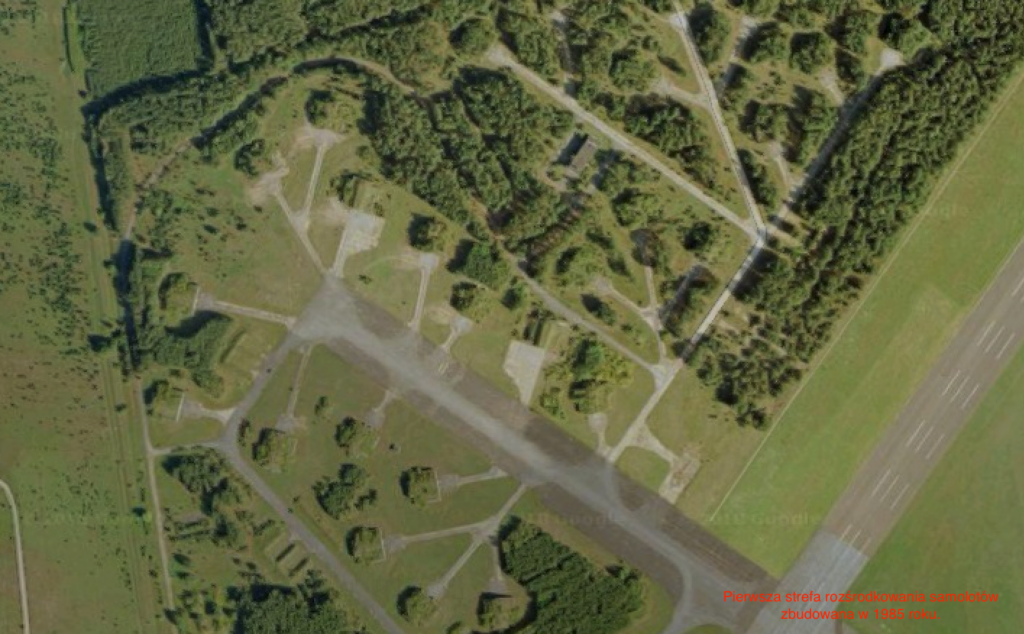
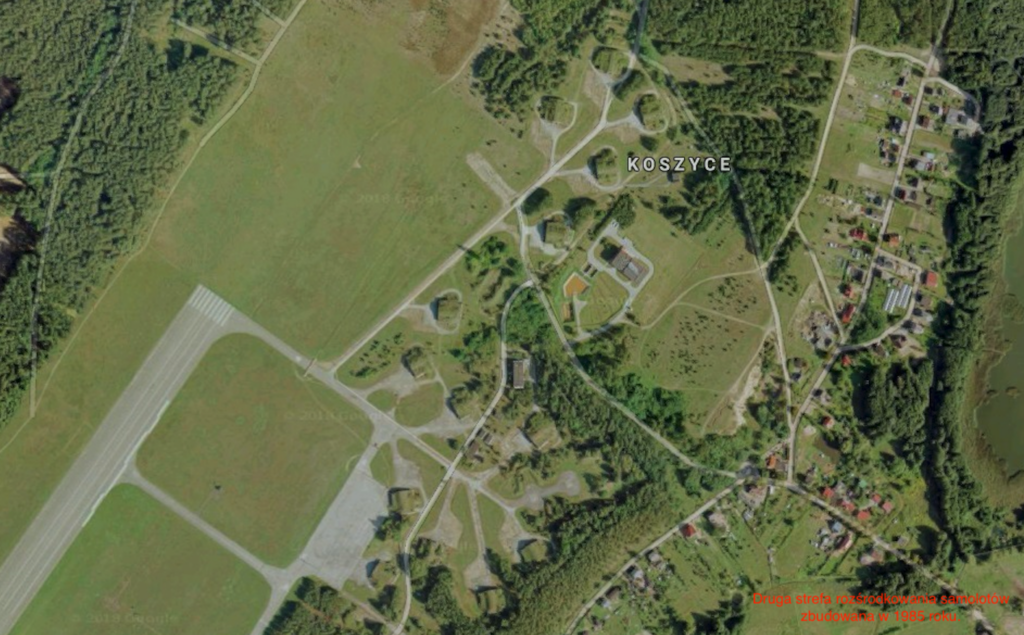
The end of military aviation in Piła. 1998.
Piła airfield 1998 (May-June) JW 3515 (87 B³). The airfield is already dying, being treated as a backup airfield for Bydgoszcz and 2BL. The last standby pair of Su-22s is still stationed there. Decisions are practically taken to disband the airfield. The history of the JW 1316 unit came to an end in 1998, when it was decided to disband the 6th PLM-B and leave only the Airport Headquarters in Piła, which was to serve as a backup airfield for the unit from Mirosławiec and Świdwin using the same type of aircraft. The last take-off of the Su-22 aircraft from 6th PLM-B took place on 5 April 1998, with the last commander of JW 1316 – Col. pilot Stanisław Galiński – at the controls of NB 9615.
The Polish Army finally left Piła Airport in 2002. The property passed into the possession of the Military Property Agency. The area was divided into plots of land, which were put up for sale. The biggest problem was with the active airfield. To date (2018), the question of whether the City will reclaim the flying field for aviation purposes is still unresolved. It is currently used by the Aeroclub of the Land of Pila.
Airport for sale.
In 2004, Pila Airport was put up for sale by AMW. The property description states; The airport has two runways – the main runway (RWY) 2,500 x 60 m – and the necessary stationary airport facilities. The development of the property consists of 134 airport buildings and structures with technical, social, general logistic facilities and warehouses with a total usable area of 184,228 square metres and a volume of 416,000 cubic metres. The airport has all the necessary airport facilities. The complex can be developed as a whole or in geodetically and functionally separated segments. It is desirable to develop the property in the future in such a way that it does not interfere with the requirement to preserve the aviation character of the facility. The airport and its technical facilities may perform the functions of a regional logistics base, concentrated on the activities of cargo handling, forwarding and servicing, around which production and service and exhibition activities may be concentrated. A base for aviation units (fire brigade, police, ambulance, border guards, etc…), sports and communication aviation may be located on the airport or a separate part of it.
As of 2018, the former Airport has not been developed for aviation purposes. A series is underway as to who will ultimately own the flying field. The Wielkopolskie Voivodeship and the City of Piła are competing. Currently (2017), the Wielkopolskie Voivodeship is the owner of the flying field. Most of the buildings have been leased by around 100 private companies.
Data Airport Piła. 2015.
The airport has the ICAO code EPPI. It has been an airstrip since 2015. The coordinates of the Airport – latitude 53.10 degrees N and longitude 16.42 degrees E. It lies at an altitude of 83 metres above sea level. The area is currently 365 hectares. Usable area of the facilities; 52,822 square metres. Radio frequencies; Square 122.4 MHz, Port 124.5 MHz. The airport has an unusual north-south orientation. Instead of an east-west layout as at most Polish airports. This was due to the takeover of the post-German airport from the Russians. The airport had as many as four RWYs (DS.), one hard and three dirt ones. The main RWY measured 2,400m x 60m, in the 03C/21C direction. It has been narrowed to a width of 40 m. The airport also has three dirt (grass) RWYs. The first measuring 700 m x 100 m, in the 03L/21R direction. The second measuring 450 m x 150 m, in the 03L/21R direction. The first and second DS. lie either side of the concrete main DS. The third measures 750m x 150m, on direction 09/27 and is located south of the CPPS and Pilot House. It is the last RWY alignment at Sawtooth Airport prior to its decommissioning.
Written by Karol Placha Hetman

